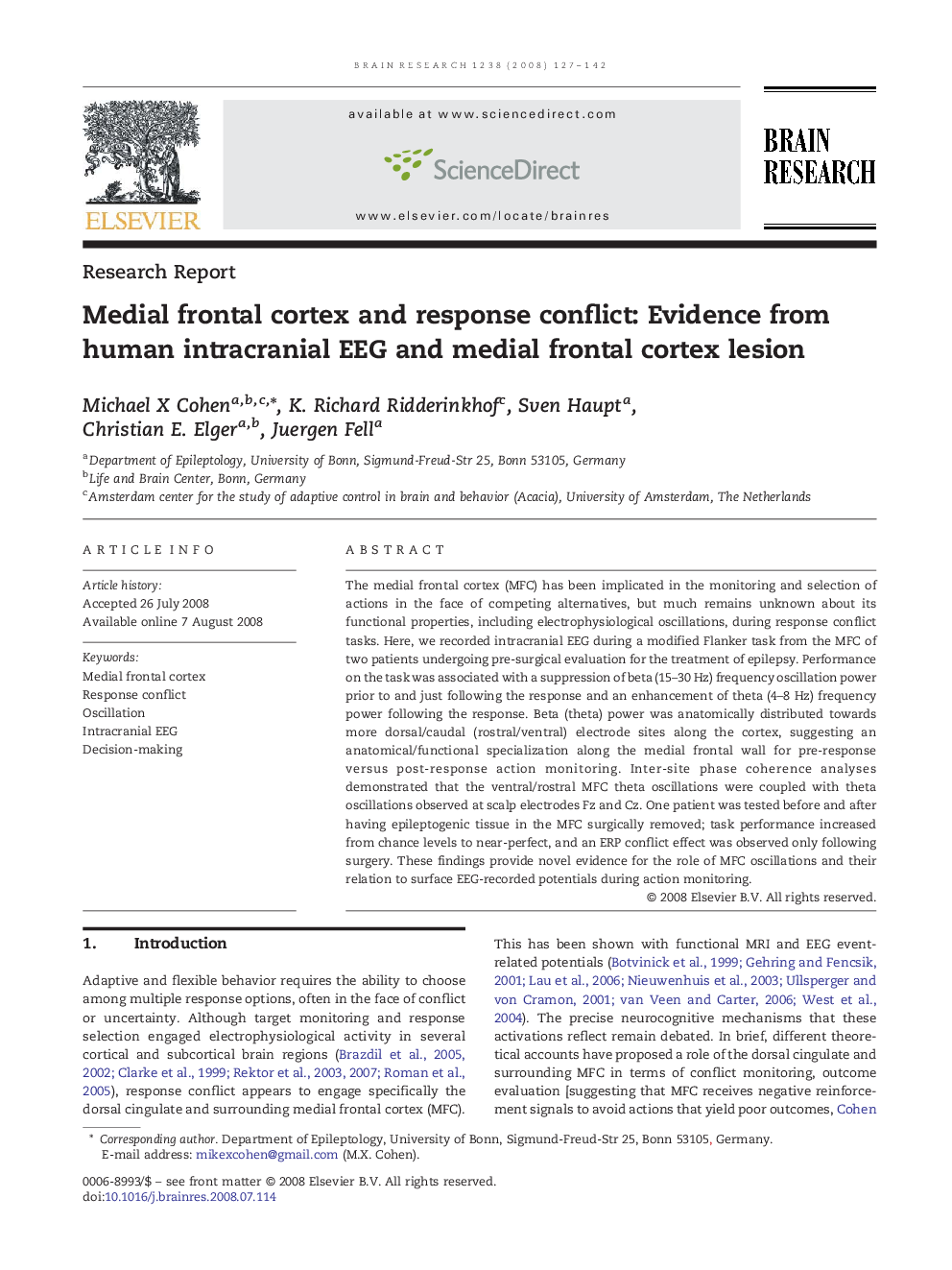| Article ID | Journal | Published Year | Pages | File Type |
|---|---|---|---|---|
| 4329208 | Brain Research | 2008 | 16 Pages |
The medial frontal cortex (MFC) has been implicated in the monitoring and selection of actions in the face of competing alternatives, but much remains unknown about its functional properties, including electrophysiological oscillations, during response conflict tasks. Here, we recorded intracranial EEG during a modified Flanker task from the MFC of two patients undergoing pre-surgical evaluation for the treatment of epilepsy. Performance on the task was associated with a suppression of beta (15–30 Hz) frequency oscillation power prior to and just following the response and an enhancement of theta (4–8 Hz) frequency power following the response. Beta (theta) power was anatomically distributed towards more dorsal/caudal (rostral/ventral) electrode sites along the cortex, suggesting an anatomical/functional specialization along the medial frontal wall for pre-response versus post-response action monitoring. Inter-site phase coherence analyses demonstrated that the ventral/rostral MFC theta oscillations were coupled with theta oscillations observed at scalp electrodes Fz and Cz. One patient was tested before and after having epileptogenic tissue in the MFC surgically removed; task performance increased from chance levels to near-perfect, and an ERP conflict effect was observed only following surgery. These findings provide novel evidence for the role of MFC oscillations and their relation to surface EEG-recorded potentials during action monitoring.
